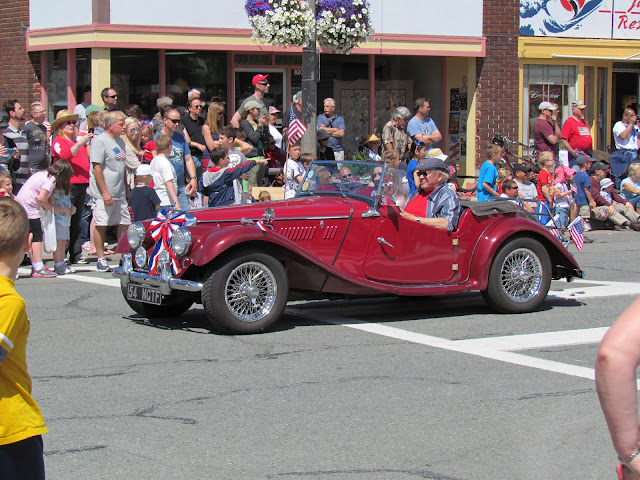Saturday Betsy and I went to Fobes to do some birdwatching and dragonflying. I lived in Fobes as a kid, on a seven acre farm. The house we lived in is shown below:
 |
| Our house in Fobes. We walked across the street to go to school. |
When I was young, Fobes was defined by a small four-room school house – one room for kindergarten, and three rooms with two grades each – plus a small grocery store across the street from the school. The grocery store was the front half of someone's home, but it was big enough to supply the snack needs of the school kids. That was Fobes – the school and the grocery store located at the intersection of five roads.
One of the five roads leads down to the Snohomish River. That's where we go to view wildlife, along a dike that helps to prevent flooding. Here's a view of the river from the dike:
 |
| The Snohomish River on its way to Puget Sound. |
It was a perfect day, with temperatures in the low 70s. Lots of birds and dragonflies, too. Betsy spotted an Eastern Kingbird, and soon saw that it had a nest and was feeding young. The nestlings were covered with down, and begging to be fed. Eastern Kingbirds like to feed on flying insects, and much of their diet in this location turns out to be dragonflies. Oh well, there's plenty for all to enjoy!
 |
| Young Eastern Kingbirds anticipate a meal – which will probably be a dragonfly or damselfly. |
 |
| An adult at the nest. |
Lots of dragonflies were out, too. Here's a list of the species we saw:
Northern/Boreal Bluet
Tule Bluet
Pacific Forktail
Common Green Darner
Blue-eyed Darner
Four-spotted Skimmer
Eight-spotted Skimmer
Cardinal Meadowhawk
Blue Dasher
The Pacific Forktail is a friendly damselfly. It likes to land on people, and gives plenty of photo opportunities. The male has an interesting face that is black on top and brilliant green below.
 |
| Male Pacific Forktail, a friendly damselfly. |
The female can take on different forms. An andromorphic female looks almost the same as the male. On the other hand, heteromorphic females have a distinctly different look, as illustrated by the immature female shown below:
 |
| Immature, heteromorphic female Pacific Forktail. |
























